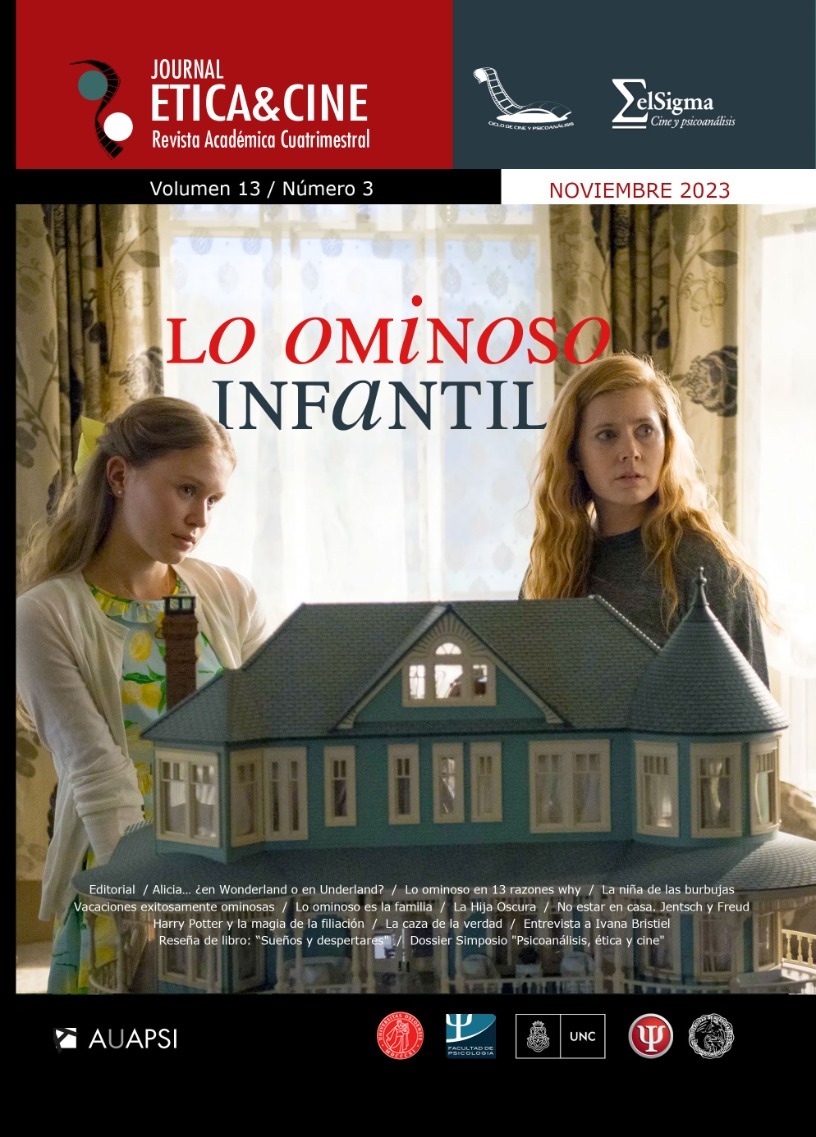The hunt for truth
DOI:
https://doi.org/10.31056/2250.5415.v13.n3.43867Keywords:
Sexual abuse, Victim, Child speech, Truth of desireAbstract
This essay is based on the film “Jagten” (“The Hunt”) directed by Thomas Vinterberg (2012), in which it is possible to address problematic issues related to the truth of discourse, sexuality and violence. The recognition of children’s rights and the reconceptualization of children as active agents, and not as mere objects of research, has given the status of truth to children’s words. In this way, the disqualification of the veracity of children’s testimonies, justified by the matrix that adult discourse imprints on child discourse, has been overcome. However, listening to children’s voices requires specific training, skills and techniques. In this sense, the film warns us that the respectful eagerness in favor of children’s rights is not free of difficulties. The article points out the consequences of an adult-centric culture, based on a tutelary conception that conceives adulthood as a role model and places children as minors (defective persons, with less value, capacity, etc.). With this, children’s speech is rejected, and the interpretation of the results is based on the word of the adult who suggests the answers. The truth of children’s desire is therefore obscured, veiled in a supposed reality that victimizes the girl and judges the alleged abuser. The symbolic violence of the creation of a discourse based on “science” is thus exercised, with its effects on the masses.
References
Bajtín, M. M. (1990). Estética de la creación verbal. 4ª ed. México: Siglo XXI.
Benyakar, M. (2006). Lo disruptivo. Amenazas individuales y colectivas: el psiquismo ante guerras, terrorismos y catástrofes sociales. (2a ed. rev.). Buenos Aires: Biblos.
Bleichmar, S. (1993). La fundación de lo inconsciente. Destinos de pulsión, destinos del sujeto. Buenos Aires: Amorrortu.
Bleichmar, S. (1990). La construcción de la verdad en análisis. Revista Asociación Escuela Argentina de Psicoterapia para Graduados, (16), 235-251.
Casas de Pereda, M. (1991). Gesto, juego y palabra. El discurso infantil. Revista Uruguaya de Psicoanálisis, (74), 25-44. Montevideo: APU.
Ferenczi, S. (1984). Confusión de Lengua entre los Adultos y el Niño. En Obras Completas Psicoanálisis, (Vol. 4, Cap. 9). Madrid: Espasa-Calpe. (Trabajo original publicado en 1932).
Gómez Espino, J. M. (2012). El grupo focal y el uso de viñetas en la investigación con niños. EMPIRIA. Revista de Metodología de las Ciencias Sociales, (24), 45-65.
Ianni, G., Kaplan, E., y Failla, H. (2001). La biografía del niño redactada por los padres: ¿fuente u obstáculo para la interpretación? Psicoanálisis. Revista de la Asociación Psicoanalítica de Buenos Aires, 23(3), 603-613.
Morin, E. (1994). Epistemología de la complejidad. En D. Fried Schnitman, Nuevos paradigmas, cultura y subjetividad (pp. 421-442). Buenos Aires: Paidós.
Peskin, L. (2015). La violencia de hoy y de siempre. En Revista de Psicoanálisis. 72(4). 627-644. Buenos Aires.
Vinterberg, T. (Dir.). (2012). Jagten. [DVD]. Dinamarca: Impacto.
Downloads
Published
Issue
Section
License
Copyright (c) 2023 Ética y Cine Journal

This work is licensed under a Creative Commons Attribution-ShareAlike 4.0 International License.
Los autores que publiquen en Ética y Cine Journal aceptan las siguientes condiciones:
Los autores/as conservan los derechos de autor © y permiten la publicación a Ética y Cine Journal, bajo licencia CC BY-SA / Reconocimiento - Reconocimiento-CompartirIgual 4.0 Internacional. La adopción de esta licencia permite copiar, redistribuir, comunicar públicamente la obra, reconociendo los créditos de la misma, y construir sobre el material publicado, debiendo otorgar el crédito apropiado a través de un enlace a la licencia e indicando si se realizaron cambios.

Este obra está bajo una licencia de Creative Commons Reconocimiento-CompartirIgual 4.0 Internacional.




